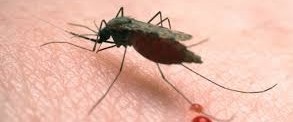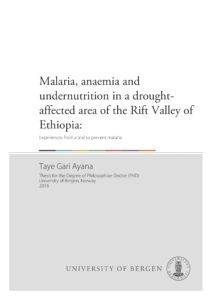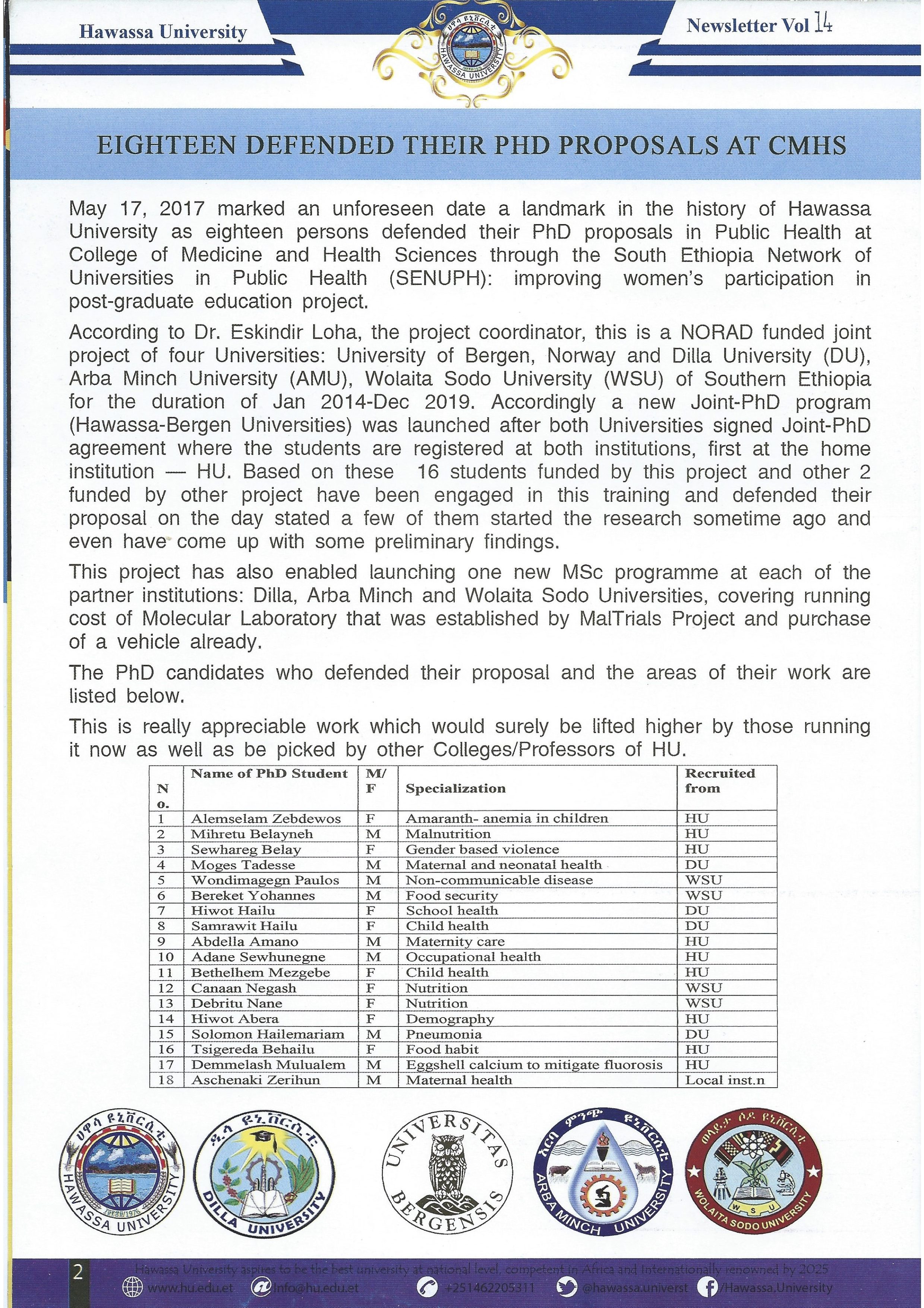Most of the work that I am currently engaged with is through the Senuph project; please see https://senuph.w.uib.no/
Category Archives: Research Training
South Ethiopia Network of Universities in Public Health II (SENUPH II)
The SENUPH II project represents a network of three universities in southern Ethiopia as well as the University of Bergen. The focus is on public health. Based on history of 20-year collaboration, we aim to strengthen the existing collaboration so to enhance efforts to improve capacity building, research, building independent senior researchers, and collaborate with the Ministry of Health with the relevant health information to improve the health of peoples in southern Ethiopia.
Project’s particular importance
Even if there has been a substantial economic growth in Ethiopia, the country remains among the 20 poorest countries. The population is in a transition with declining fertility, increasing life expectancy, heavy burdens of poverty-related diseases and increasing load of non-communicable diseases. Thus, the country needs evidence-based healthcare to improve health policy and improve the health of the population.
This project focuses on health challenges and priority setting. We believe universities in southern Ethiopia, can produce relevant information for policymakers to enhance public health work. By focusing on infectious diseases, malnutrition and the emerging burden of non-communicable diseases, we aim to build capacity in higher education both at universities and at the Ministry of health.
By the end of the project and through building strong research groups, we expect to have nine independent researchers capable of research leadership, supervising future PhD students, mentoring post docs, that further can develop their institutions when this project ends. Furthermore, we expect to have strengthened two PhD programs that would be sustainable in an Ethiopian context.
Building on a previous joint PhD degree programme between Hawassa University and the University of Bergen, and strengthening research at Dilla and Arba Minch University, we plan through PhD and post doc research, linked to training at the master’s level, strengthen the ownership, capability, and sustainability of the universities and of the Ministry of health to carry out evidence-based healthcare. The teaching, research, and implementation work will be interdisciplinary and integrated and involve disciplines such as epidemiology, medicine, priority setting and health economics, household economy, essential laboratory disciplines for emerging and existing epidemics.
Project goals
Through this six-year project, we aim to strengthen the institutional capacity for teaching, supervision and research by developing teams of researchers consisting of both senior (post docs) and junior researchers (PhD students and PhD holders) and thereby obtaining a critical mass needed for future sustainability of the institution. This will also focus on enhancing leadership capability of researchers so that they become independent researchers.
We shall strengthen research groups on thematic areas such as communicable diseases (malaria, emerging and re-emerging infections, and tuberculosis), nutrition, and priority setting on non-communicable diseases and health economics.
Relevant SDGs in the project
This project will deal with several of the sustainable development goals. The main goal is good health and well-being (SDG3). However, a large proportion of the efforts will be to reduce hunger in an area where chronic malnutrition is highly prevalent (SDG2). Our program will be based on quality teaching (DG4), and gender equality (SDG5).
Partner institutions
In Ethiopia, Hawassa University, Arba Minch University, and Dilla University, and the University of Bergen
New article: Few pregnant women seek health care in Gedeo in southern Ethiopia
Borde MT, Loha E, Johansson KA, Lindtjorn B (2019) Utilisation of health services fails to meet the needs of pregnancy-related illnesses in rural southern Ethiopia: A prospective cohort study. PLoS ONE 14(12): e0215195. https://doi.org/10.1371/journal.pone.0215195
Although maternal survival has improved in the last decades, evidence on illnesses and the use of health services during pregnancy remains scarce. Therefore, we aimed to assess the incidence and risk factors for illnesses among pregnant women and measure the use of health services. A prospective cohort study was conducted in three kebeles in rural southern Ethiopia among 794 pregnant women from May 2017 to July 2018. Each woman was followed every two weeks at home. Poisson and survival regression models were used for analysis. The incidence rate of episodes of illnesses was 93 per 100 pregnant-woman-weeks (95%CI: 90.6, 94.2), with an average of eight episodes of illnesses per woman. Anaemia accounted for 22% (177 of 794 women), and hypertension 3% (21 women of 794 women). However, utilization of health services for any illness episodes was only 8% (95%CI: 7.6%, 8.9%). The main reasons for not using health services were that the women thought the illness would heal by itself, women thought the illness was not serious, women could not afford to visit the health institutions, or women lacked confidence in the health institutions. The risk factors for illnesses are having many previous pregnancies in life time (ARR = 1.42; 95%CI = 1.02, 1.96), having history of stillbirth (ARR = 1.30; 95%CI = 1.03, 1.64), having history of abortion (AHR = 1.06; 95%CI = 1.02, 1.11), and walking more than 60 minutes to access the nearest hospital (AHR = 1.08; 95%CI = 1.03, 1.14). The risk factors for low use of health services are also having history of abortion (AHR = 2.50; 95%CI = 1.00, 6.01) and walking more than 60 minutes to access the nearest hospital (AHR = 1.91; 95%CI = 1.00, 3.63). Rural Ethiopian pregnant women experience a high burden of illness during pregnancy. Unfortunately, very few of these women utilize health services.
Book Chapter: Developing a sustainable PhD programme: Experiences from southern Ethiiopia
We recently published a chapter about the ideas behind the development of our SENUPH programme in southern Ethiopia:
Lindtjørn, Bernt, Moges Tadesse, and Eskindir Loha. “Developing a Sustainable Phd Programme: Experiences from Southern Ethiopia “ Chap. 18 In Sharing Knowledge Transforming Societies. The Norhed Programme 2013 – 2020, edited by Tor Halvorsen, KS Orgeret and R Krøvel, 442-56. Cape Town, Bergen: African Minds and University of Bergen, 2019.
See book chapter here Lindtjorn-NORHED chapter 18
Reducing poverty
Intervention studies, and especially randomised controlled trials, has been in the health tool box for many years. In medicine, we usually examine one intervention and look at one outcome. About 20 years ago, economists, furthermore, began to use these powerful methods.
Now, this year’s Nobel prize in economics gives an outstanding recognition to Abhijit Banerjee, Indian born professor at Massachusetts Institute of Technology, to Esther Duflo, a French born professor also at MIT, and to Michael Kremer, professor at Harvard University.
Their great achievements are that they introduced randomised controlled trials to obtaining reliable answers about the best ways to fight poverty. They divided the question of reducing poverty into smaller and more manageable, questions – for example, the most effective interventions for improving educational outcomes or child health. They show by doing so, questions are generally best answered via carefully designed experiments among the people who are, for the most part, affected.
In the research that we do, we frequently find that poverty is an underlying cause of a health problem, as can be seen by for example malnutrition. Now, the challenge is to identify smaller steps that could reduce poverty and subsequently malnutrition using their novel concept of breaking the problems into tinier and manageable proportions.
I hope that development agencies and governments, in collaboration with universities, will use such tools to improve their work.
Low immunization coverage in Wonago district, southern Ethiopia: A community-based cross-sectional study
Hailu S, Astatkie A, Johansson KA, Lindtjørn B (2019) Low immunization coverage in Wonago district, southern Ethiopia: A community-based cross-sectional study. PLoS ONE 14(7): e0220144. https://doi.org/10.1371/journal.pone.0220144
Introduction Immunization is a cost-effective intervention that prevented more than 5 million deaths worldwide from 2010 to 2015. Despite increased vaccination coverage over the past four decades in many African countries, including Ethiopia, universal coverage has not yet been reached. Only 39% of children aged 12–23 months received full vaccinations in Ethiopia, according to the 2016 Ethiopian Demographic Health Survey. This study aimed to evaluate immunization coverage and identify individual and community factors that explain incomplete vaccination coverage among children aged 6–36 months in the Wonago district of southern Ethiopia.
Methods We conducted a community-based, cross-sectional study in three randomly selected kebeles in the Wonago district from June to July 2017. Our nested sample of 1,116 children aged 6–36 months included 923 child-mother pairs (level 1) within kebeles (level 2). We conducted multilevel regression analysis using STATA software.
Results Among participants, 85.0% of children aged 12–36 months received at least one vaccine, and 52.4% had complete immunization coverage. After controlling for several individual and community variables, we identified six significant predictor variables for complete immunization: Older mothers’ age (AOR = 1.05, 95% CI: 1.00–1.09), higher utilization of antenatal care (AOR = 1.36, 95% CI: 1.14–1.62), one or more tetanus-toxoid vaccination during pregnancy (AOR = 2.64, 95% CI: 1.43–4.86), mothers knowing the age at which to complete child’s vaccinations (AOR = 2.00, 95% CI: 1.25–3.20), being a female (AOR = 0.64, 95% CI: 0.43–0.95), and child receiving vitamin A supplementation within the last 6 months (AOR = 2.79, 95% CI: 1.59–4.90). We observed a clustering effect at the individual and community levels with an intra-cluster correlation coefficient of 48.1%.
Conclusions We found low immunization coverage among children in the Wonago district of southern Ethiopia, with significant differences across communities. Promoting maternal health care and community service could enhance immunization coverage.
Taye Gari’s PhD thesis: Malaria, anaemia and undernutrition in Ethiopia
Taye Gari. Malaria, anaemia and undernutrition in a drought-affected area of the Rift Valley of Ethiopia: Experiences from a trial to prevent malaria. PhD. University of Bergen, 2018. Bergen
Summary of PhD thesis
Background: In Ethiopia, malaria, anaemia and undernutrition are common childhood health problems. The country is planning to reduce these conditions to a level where they are not a public health problem. Meanwhile, for the success of this aim, a description of the occurrence and interaction of malaria, anaemia and undernutrition could help contribute to design tailored, efficient and effective control strategies. This study was done in the context of malaria prevention trial, which aimed to measure the effect of combining long-lasting insecticidal nets (LLINs) and indoor residual spraying (IRS) in reducing the malaria incidence compared to LLINs or IRS alone. The study area was affected by a serious drought and famine during the first year of the study.
Objectives: The overall aim of this thesis is to improve our understanding of the effect of malaria prevention on anaemia, and to assess the association between malaria, anaemia and undernutrition among children in a drought-affected area in south-central, Ethiopia.
Methods: A cohort of 5309 residents was followed-up for 16 weeks to measure the variations in malaria incidence among villages (Paper I), and the results were used as a baseline to calculate the sample size needed for the trial. We followed a cohort of children aged 6 to 59 months for one year to describe anaemia and changes in haemoglobin (Hb) concentration (Paper II). A cohort of 4468 children was followed-up for 89 weeks to measure the relationship between malaria and undernutrition (Paper III). Weekly home visits and patient self-referral were also used to identify malaria cases. We conducted Hb concentration (once a year) and anthropometry (twice a year) surveys.
Results: In Paper I, we observed a variation in malaria incidence among villages. On the other hand, the insecticide-treated nets ownership was low (27%), with the distance from the lake or river and younger age being the main risk factors for malaria. The findings of this study were used as a baseline to calculate the sample size for the trial. In Paper II, despite the malaria prevention effort in the community, we observed an unexpected increase in anaemia prevalence over the period of a year, which could be due to the drought and famine that affected the area. A higher incidence of anaemia was observed among children with stunting, malaria infection, young age and in poor families. However, no significant difference in anaemia prevalence was observed among the different trial arms (LLIN+IRS, LLINs alone, IRS alone and routine arm). In Paper III, malaria infection was a risk factor for stunting and wasting, although undernutrition was not a risk for malaria infection. Furthermore, an increase in the prevalence of stunting, but no significant change in a prevalence of wasting was observed over time.
Conclusions: We showed a large variation in malaria incidence among villages. Conducting trials in a drought-prone area may bring an unexpected challenge. We observed an unexpected increase in anaemia prevalence over a year. There was no significant difference in anaemia prevalence among the trial arms. Moreover, a close follow-up of the nutritional status of children with malaria infection may be needed. There could hence be a need to prioritize villages nearer to the main mosquito breeding sites for malaria control.
Trial registration: PACTR 201411000882128 (8 September, 2014)
Use of epidemiological and entomological tools in the control and elimination of malaria in Ethiopia
Animut A and Lindtjørn B. Use of epidemiological and entomological tools in the control and elimination of malaria in Ethiopia. Malaria Journal 2018; 17:26.
Abstract
Malaria is the leading public health problem in Ethiopia where over 75% of the land surface is at risk with varying intensities depending on altitude and season. Although the mortality because of malaria infection has declined much during the last 15–20 years, some researchers worry that this success story may not be sustainable. Past notable achievements in the reduction of malaria disease burden could be reversed in the future. To interrupt, or even to eliminate malaria transmission in Ethiopia, there is a need to implement a wide range of interventions that include insecticide-treated bed nets, indoor residual spraying, improved control of residual malaria transmission, and improved diagnostics, enhanced surveillance, and methods to deal with the emergence of resistance both to drugs and to insecticides. Developments during the past years with increasing awareness about the role of very low levels of malaria prevalence can sustain infections, may also demand that tools not used in the routine control efforts to reduce or eliminate malaria, should now be made available in places where malaria transmission occurs.
Malaria Conference in Hawassa

On December 13, 2017, the MalTrials project, a joint venture between Hawassa University, Addis Ababa University, and University of Bergen held International Research Seminar on Malaria. The conference was held at Haile Resort in Hawassa. The Maltrials project, Combining long-lasting insecticidal nets and indoor residual spraying for malaria prevention in Ethiopia: a cluster randomized controlled trial, started in 2013, and the main results were presented at the conference.
More information, and pictures from the conference can be viewed at the website of Hawassa University: International Research Seminar on Malaria Control held at Hawassa


